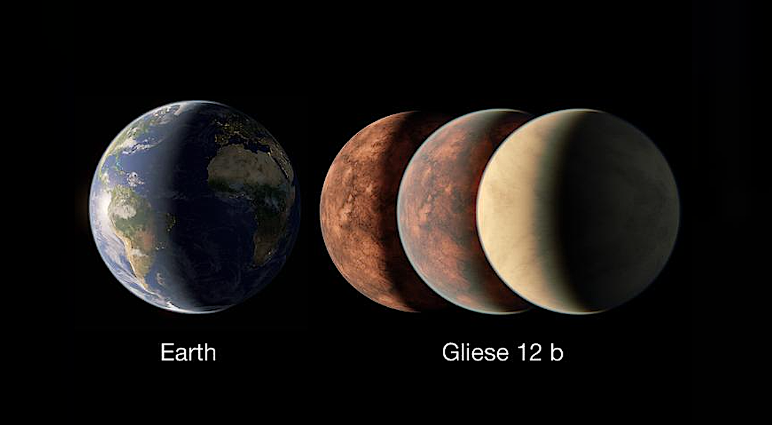GLIESE 12 B: A Potentially Habitable Exoplanet (GS Paper 3, Science & Tech)

Introduction:
- Astronomers have made an exciting discovery with the identification of Gliese 12 b, a potentially habitable exoplanet located approximately 40 light-years away from Earth.
- This discovery, made possible by advanced space telescopes, offers valuable insights into the diversity of planetary systems beyond our solar system.
Discovery and Validation:
- Initial identification of Gliese 12 b as a potential planet candidate was made by NASA's Transiting Exoplanet Survey Satellite (TESS).
- The European Space Agency's CHaracterising ExOPlanet Satellite (CHEOPS) confirmed its status as an exoplanet, adding credibility to the discovery.
Physical Characteristics:
- Surface Temperature: Gliese 12 b boasts an average surface temperature of 42 degrees Celsius, making it warmer than Earth but cooler than many other known exoplanets.
- Size: Comparable in size to Venus and slightly smaller than Earth, Gliese 12 b presents an intriguing target for further study.
- Orbital Details: The exoplanet orbits an M dwarf star, Gliese 12, every 12.8 days, with three planets residing in the habitable zone, where liquid water could potentially exist.
Star Characteristics:
- Gliese 12, the host star, is classified as an M dwarf star, characterized by its low mass.
- Metallicity: The star exhibits low metallicity, suggesting potential differences in magnetic activity and geological processes compared to Earth.
- Magnetic Activity: The star's low magnetic activity increases the likelihood that Gliese 12 b could retain an atmosphere, an essential factor for habitability.
Scientific Significance:
- Proximity: As one of the closest potentially habitable exoplanets discovered, Gliese 12 b offers a unique opportunity for in-depth study and comparison to our own solar system.
- Comparative Study: By examining the divergent evolutionary paths of Earth and Venus, scientists hope to gain insights into factors influencing habitability, such as water retention and greenhouse effects.
Future Research:
- Atmospheric Analysis: Determining the presence and composition of Gliese 12 b's atmosphere is crucial for assessing its habitability.
- Temperature Suitability: Despite its warm surface temperature, Gliese 12 b may harbor conditions suitable for life forms adapted to extreme environments.
- Potential Greenhouse Effect: Investigations will explore whether the exoplanet experiences a runaway greenhouse effect akin to Venus, which could impact its habitability.
- James Webb Space Telescope (JWST): Gliese 12 b is a promising target for the JWST, offering opportunities to detect atmospheric features and further unravel its mysteries.
Conclusion:
- The discovery of Gliese 12 b opens new avenues for exploration and underscores the ongoing quest to understand the diversity of exoplanetary systems and the potential for life beyond Earth.


